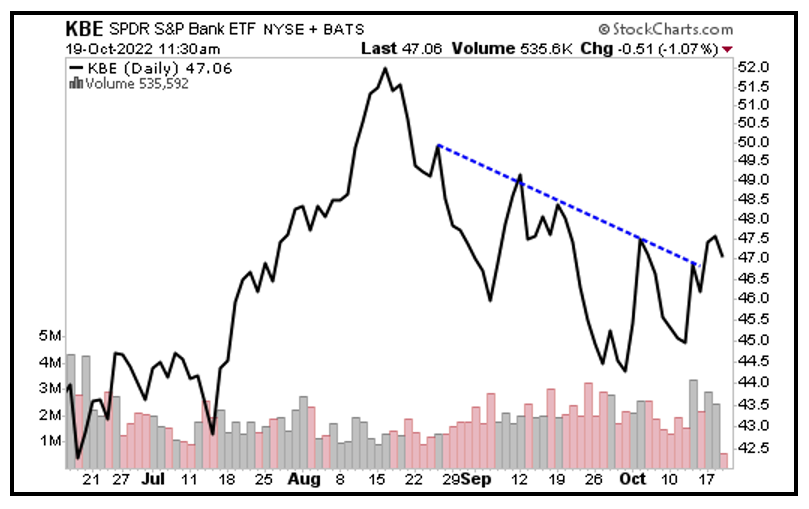It’s no secret that interest rates are up, and you probably noticed if you’re looking to borrow for a home, car or anything else.
September’s Consumer Price Index and Producer Price Index readings of 0.4% monthly growth showed inflation is sticky, so the Fed is forced to continue its aggressive hike cycle.
The following chart of the Fed’s target rate shows how swift the change from free-money monetary policy this year was:

The Fed raised its target rate by 75 basis points to 3%–3.25% in September and it’s expected to hike until it reaches 5%–5.25% by next March.
With rates expected to hold near 5% until the end of 2023, consumers will have to contend with a higher interest rate environment. It’s bad news for borrowers, but not everyone.
You know who loves higher rates? Banks.
Banks’ margins expand with rising interest rates because the spread widens between their cost of borrowing and the rates they charge for loans.
Big Banks Taking Advantage
Wells Fargo (WFC) reported Q3 earnings on Oct. 14, topping earnings per share estimates of $1.09 by 20%.
Bank of America (BAC), Citigroup (C) and JPMorgan Chase (JPM) followed suit, beating earnings estimates by 4%, 5% and 8%, respectively.
Sure, the economy is pricing in a greater likelihood of a recession. But the underlying fundamentals are strong.
A recession would lower credit quality if borrowers were unable to repay loans, but the U.S. unemployment rate stands at 3.5% after gaining 263,000 jobs last month.
Wells Fargo cited high payment rates and “historically low” delinquencies in its earnings announcement. Soaring interest rates and consistent consumer repayments helped the bank increase its net interest income 36% year over year.
Banks are still adjusting to the probability of a recession by increasing their provisions for credit losses. Regardless, they are much better positioned to weather a potential economic downturn than in the past.
The Fed’s annual stress test in June found that major banks are well-capitalized to weather “severely adverse economic and financial conditions.”
The report found that large banks could absorb $612 billion in losses and still maintain double their required capital. For reference, Wall Street banks needed just $4.5 billion in loan loss reserves to adjust for the current economic climate this quarter.
The Fed further reassured that major banks could continue lending despite greater economic turmoil and a simulated 10% unemployment rate.
How Investors Can Gain Exposure
One way investors can play widening banking margins is through the SPDR S&P Bank ETF (KBE). The exchange-traded fund tracks a modified, equally-weighted index with exposure to the banks segment of the S&P Total Market Index.
As I just mentioned, KBE’s 100 holdings are equally weighted, but the ETF holds the heavyweights JPMorgan Chase, Bank of America and Wells Fargo.
KBE charges an expense ratio of 0.35% but its dividend recently yielded 2.91% annually. The fund trades with solid liquidity, averaging daily volume of 1.9 million shares. It manages nearly $2 billion in net assets.
Looking at KBE’s daily chart, we see that it managed to break out of its recent downtrend:

The fund is up 4.58% in the past five days, and since bottoming in mid-June, it’s risen 8.38%.
KBE trades well below its recent August high, offering the opportunity to enter at a discount while the tide is turning.
Always do your own research before buying anything, but it could help to add exposure to companies growing margins in uncertain times.
All the best,
Sean
P.S. Starting Oct. 25, Weiss Ratings Members once again get first dibs on something normally reserved for the likes of angel investors like Mark Cuban: the chance to invest in rapidly growing companies before they're listed on public stock exchanges. Click here to get access.

